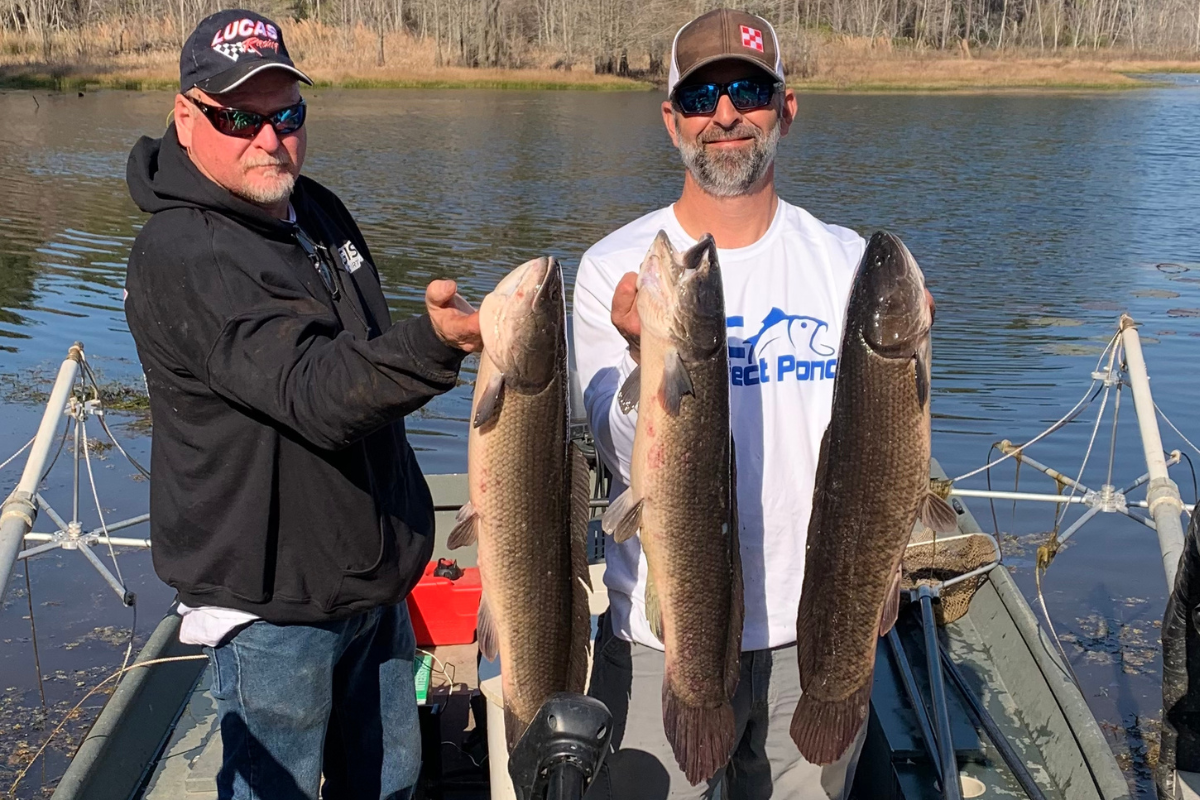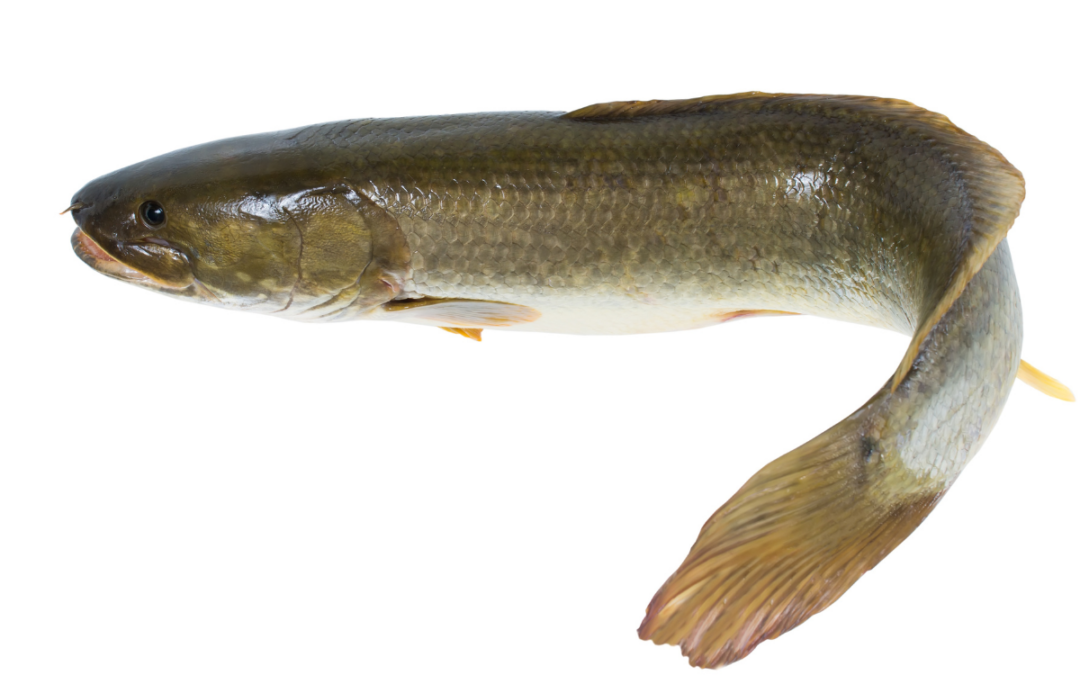Known by many names, the bowfin is a prehistoric fish that we commonly encounter when performing electrofishing surveys on ponds or lakes in south Georgia and north Florida. There are actually two species of Bowfin in the United States which include the Ruddy Bowfin (Amia calva) and the Eyetail Bowfin (Amia ocellicauda). We only see the Ruddy Bowfin in our region.
You’ll commonly hear these fish called mudfish, dogfish, or grennels. For the most part, they are considered a nuisance in ponds and lakes across our region. But some anglers enjoy how hard these fish fight and will actually try to catch them. And while most anglers consider them to have a poor eating quality, there are those who claim to love them on a plate.
It no doubt that these are beautiful fish and a great example of ancient genetics surviving over time, but are they good for a pond where growing bluegill and trophy bass is the goal? Below we’ll explain more about the bowfin and help you decide whether you should keep them in your pond or relocate them.
Bowfin Habitat and Biology
We usually don’t find bowfin when performing electrofishing surveys on new ponds or ponds that are just a few years old. We do find them in older ponds or lakes that have been there for decades. We also tend to find them in ponds that are connected to another water source, whether it be a stream or an offshoot of a nearby river.
They’re usually found in shallow, muddy areas of the pond or lake where the water is relatively still. These fish notoriously don’t need much oxygen to survive, so they tend to thrive in these areas. Young bowfin have the ability to air breathe and have been noted to be able to survive 21 days in a pond with no standing water.
They have a similar diet to largemouth bass and other top pond predators. They’ll eat crayfish, fish, frogs, and large insects. They can be voracious feeders that grow to massive sizes in ponds where there is plenty to eat. Most anglers that hook a large bowfin think that they have gotten hung on a stump or log. These fish can sometimes be almost impossible to land due to their size and strength.

Should You Remove Bowfin?
There’s no doubt that bowfin will provide competition for resources in a pond or lake. They have the same diet as a largemouth bass, so the presence of bowfin could certainly limit the available food for the largemouth bass in your pond. The ultimate question to ask here is whether the bowfin population is large enough to have an effect.
We serve customers across south Georgia and north Florida who have private ponds or lakes. The general consensus among our customers is that they want them removed from the pond. As mentioned earlier, most people don’t consider them to be quality table fare. And most anglers here don’t enjoy catching them because they can make a mess of a boat.
If you’re catching a bowfin once or twice a year while regularly fishing your pond or lake, you likely don’t have an issue — especially if the largemouth bass in your pond are nice and healthy. But if you’re catching bowfin on a regular basis and your largemouth bass population appears unhealthy, you might consider removing them.
They will eat small bass, bluegill, and can eventually compromise the desired size class distribution for a pond or small lake. We’ll usually ask our customers about removal strategies before surveying a pond. If they want them removed, we will remove the ones we catch during a survey. If they want to preserve that diversity in their pond, we’ll leave them be. We let the customer know of the potential impacts of bowfin populations and they can make the decision from there.
Let Up Help Improve Your Pond!
If you’re in the south GA or north FL areas and need help removing undesirable fish species in your pond or lake, complete this form and we’ll contact you to schedule a time to meet. We look forward to turning your pond into a productive fishery for years to come!

